Celebrating a New Year with the Music of Carnival
Well, it’s that time of year again… the season of vibrant colors, decedent foods, unbelievable sights and unforgettable musical sounds. That season is known as “Carnival” time in many places around the world. For most who usually celebrate this time of merrymaking and festivity, plans have been cancelled this year, and for good reason. However, there’s always an opportunity to enjoy the music of Carnival season. Come along and enjoy a little taste of what Carnival sounds like, near by (Mardi Gras) to far away (Brazilian Carnival) – some with a reimagined jazz twist.
Originally, Carnival celebrations were held to symbolize driving out the bleak winter and beckoning in the bounty of springtime. In the Middle Ages, this transitioned to a Catholic tradition in preparation for the austerity of Lent. Now, Carnival is found around the world with local traditions that reflect a celebration of combined cultures.
Embodying the melting pot of America, those celebrations are best known in New Orleans, where the sounds of the Caribbean, Africa, Spain and Native America fused together to create a genre of American jazz found on every street corner during Mardi Gras.
As jazz evolves, so does the sounds of Carnival. New music every year makes the play list longer. This kaleidoscope of Mardi Gras is an example of collaboration and cross-pollination of cultures, acceptance and celebration of differences – the roots of jazz then and now – and a perfect celebration of what we hope for in 2021.
While the parades and parties are nixed for this year, the celebration and the music isn’t. Here’s your Spotify playlist to dance to, followed by a little about each song. .
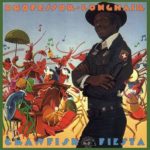
Big Chief, by Professor Longhair. Original name Henry Roeland Byrd, (1918- 1980, New Orleans), helped shape the sound of New Orleans rhythm and blues from the mid-1940s. His signature piano style, characterized by a rollicking boogie-woogie bass and engaging syncopation, can be heard in the music of such influential figures as Fats Domino and Allen Toussaint. “Big Chief” is one of several of his compositions that remains an anthem during Mardi Gras. https://youtu.be/4j5PprDVYgU
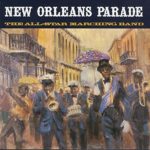
Second Line, Joe Avery. Recorded in 1950, this is a bellowed staple of the Carnival songbook, highlighting the syncopated rhythms of New Orleans jazz, R&B, and funk. The “second line” is a parade and a music style developed from the African American traditional jazz funeral processions. The term second line refers to the uninvited guests who join along, and engulf the band and first liners in a celebration of life. This exuberant and improvisational sound evolved into traditional New Orleans jazz and the leading sound of Carnival. https://youtu.be/JuONPPUU7A0
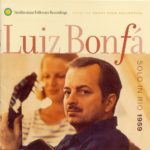
Manha de Carnaval, Luiz Bonfa’ from the 1959 tragic Brazilian play Black Orpheus, the plot is an adaptation of the Greek legend of Orpheus and Eurydice, set in the modern context in Rio de Janeiro’s Carnival (still the largest Carnival celebration in the world). This song brought the bossa nova international and became a jazz standard. Performed by many, including Stan Getz and Wayne Shorter. https://youtu.be/FNK-OaWhwGU
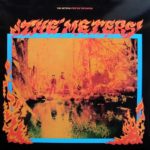
Mardi Gras Mambo, by The Meters. The Meters, the seminal funk outfit founded by keyboardist-composer Art “Poppa Funk” Neville. Back in 1954, at the tender age of 17, Neville, as leader of The Hawketts, achieved jukebox immortality with one of the most popular Mardi Gras tunes of all time. Later, The Meters disbanded and Art joined forces with his brothers (The Neville Brothers). https://youtu.be/v7hxqp2reVc
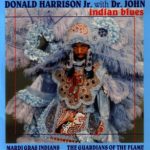
Hu-ta-Nay by Donald Harrison Jr. featuring Dr. John and The Guardians of the Flame. From the 1991 album Indian Blues recorded in 1991, which delves into Harrison’s New Orleans heritage. New Orleans born saxophonist Donald Harrison is considered a master of every era of jazz, soul, funk, and a composer of orchestral classical music. He is also recognized as Big Chief of Congo Square in Afro-New Orleans culture. https://youtu.be/8IZ48r_WbCM

Samba de Orfeu, by Luiz Bonfa’. Also part of the 1959 tragic Brazilian play Black Orpheus and evolved to a brazilian jazz standard. “With rhythm blue, I dance for you, A samba beat, let two hearts meet”. Performed by many, including Paul Desmond and Jim Hall Quartet. https://youtu.be/CaflYqf70BA
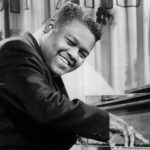
Go to the Mardi Gras, by Professor Longhair. First released as “Mardi Gras in New Orleans” by Professor Longhair and His Shuffling Hungarians in 1949. Co-written the song with Theresa Terry, released as a single by Fats Domino in 1953, and now an R&B jazz tune now considered an iconic festive song of the New Orleans Carnival season. We’ve included Fats Domino’s version. https://youtu.be/lYeyd42ePVk

They all Ask’d for You, by The Meters. A second song from The Meters, off one of their most successful albums, Fire on the Bayou. Recorded in 1975, the same year they were invited to play for Paul McCartney and to tour with Mick Jagger. From 1976 to 77 they played in The Wild Tchoupitoulas with George and Amos Landry and The Neville Brothers. https://youtu.be/aSZzsWRx_IE
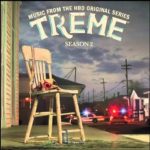
Carnival Time, by Al “Carnival Time” Johnson. One of the most played and requested classics of New Orleans Mardi Gras, this song was recorded in 1960. New Orleans jazz pianist Al was nicknamed after and in honor of his famous song. https://youtu.be/1zgh2j48jAY
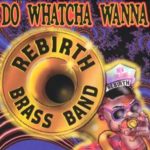
Do Watcha Wanna, by Rebirth Brass Band. One of the most famous songs in the modern brass band repertoire, featuring the “Bamboula” rhythm and lots of call and response. The Rebirth Brass Band was founded in 1983, was the 2012 Grammy Award for Best Regional Roots Music Album, performed in the pre-telecast ceremony for the 54th Annual Grammy Awards, has had a longstanding regular Tuesday night gig at the Maple Leaf Bar, is one of the pillars of the New Orleans music scene, and appears in several episodes of the HBO series Tremé. https://youtu.be/G1E8f9_u1nE
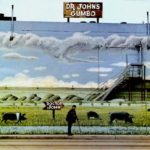
Iko Iko, by Dr. John. Grammy winning singer and Rock and Roll Hall of Famer Malcolm John Rebennack Jr. (1941 – 2019), performed lively theatrical stage shows. His music combined blues, pop, jazz, boogie-woogie, funk, and rock and roll. He gained a following in the late 1960s after the release of his debut album Gris-Gris. His influence as a Mardi Gras musician incorporated the sounds, traditions and spiritual healing ideals of Haiti. https://youtu.be/uRenPt9yFjw
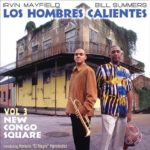
Fantasia de Samba, by Los Hombres Calientes, featuring John Boutte. From Volume 3: New Congo Square, the group’s 2001 release, was a Billboard finalist and Grammy nominee. Like a rich, flavorful New Orleans gumbo, Los Hombres Calientes, led by trumpeter Irvin Mayfield and percussionist Bill Summers, goes on location to join forces with locals in order to create authentic sounds from the places where music began: locations such as Africa, Cuba, Trinidad, Jamaica, Haiti and, of course, their native New Orleans. Mayfield is artistic director of The New Orleans Jazz Orchestra. https://youtu.be/kWsb-ZhHjnI

Shallow Water, by Donald Harrison Jr. featuring Dr. John and The Guardians of the Flame. A second modern representation of African American Indian music popularized during Mardi Gras. “As an African-American, you sort of feel you don’t have any roots, because we don’t know ourselves as a culture. When I started masking Indian again I saw I had roots and I could really feel where I came from. The tribes are some of the most important cultural entities in America.” Donald Harrison Jr Interview w Peter Waltrous, NY Times.
We’ve only touched the surface. Conversations with Curtis welcomed Donald Harrison in May 2020 and talked about his experiences as a chief. For more information on Carnival around the world, Mardi Gras, the second line, the “Mardi Gras Indians”, and some of the unique history and tradition represented in the music, check out these links and then keep exploring.
https://www.britannica.com/place/New-Orleans-Louisiana/Cultural-life
https://www.npr.org/sections/ablogsupreme/2011/03/09/134087202/the-music-of-mardi-gras-history-you-can-dance-to
https://mardigrastraditions.com/mardi-gras-music-history/
https://www.thoughtco.com/carnival-celebration-and-geography-1434470
https://www.nationalgeographic.com/travel/top-10/pre-lenten-carnivals/